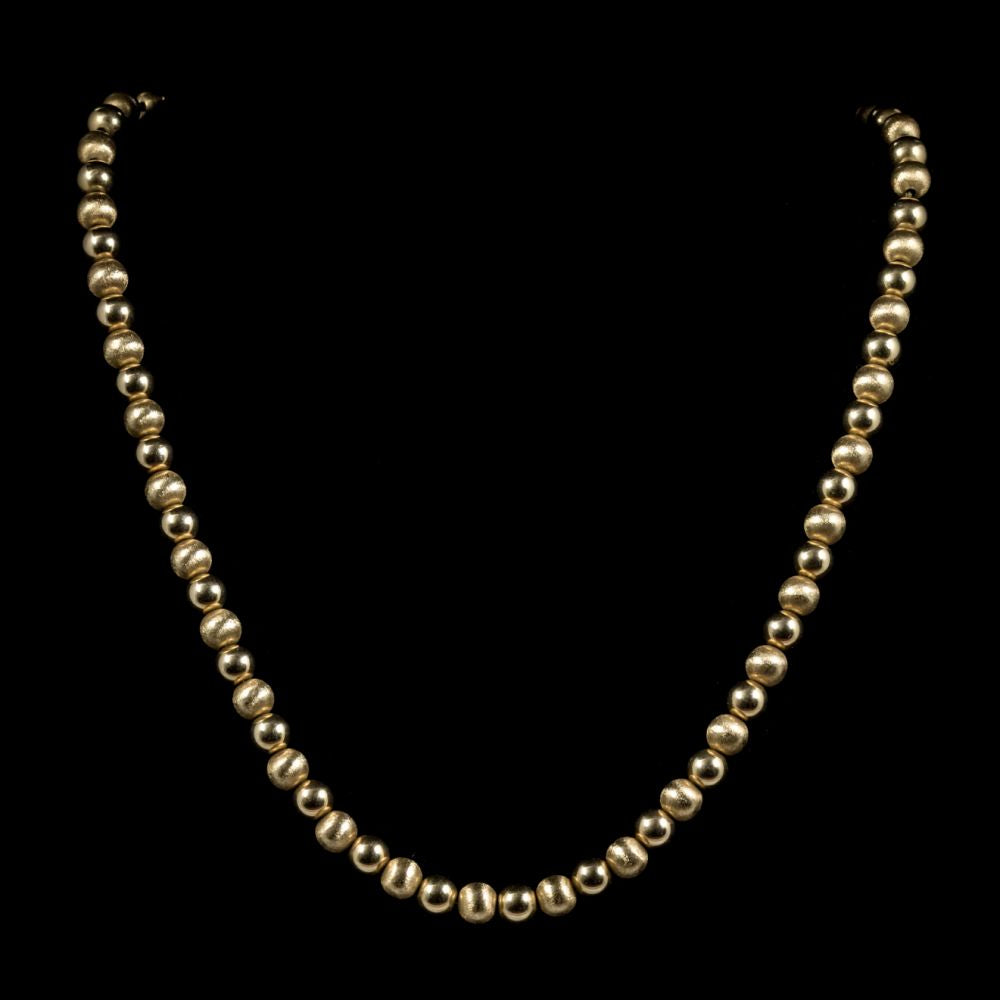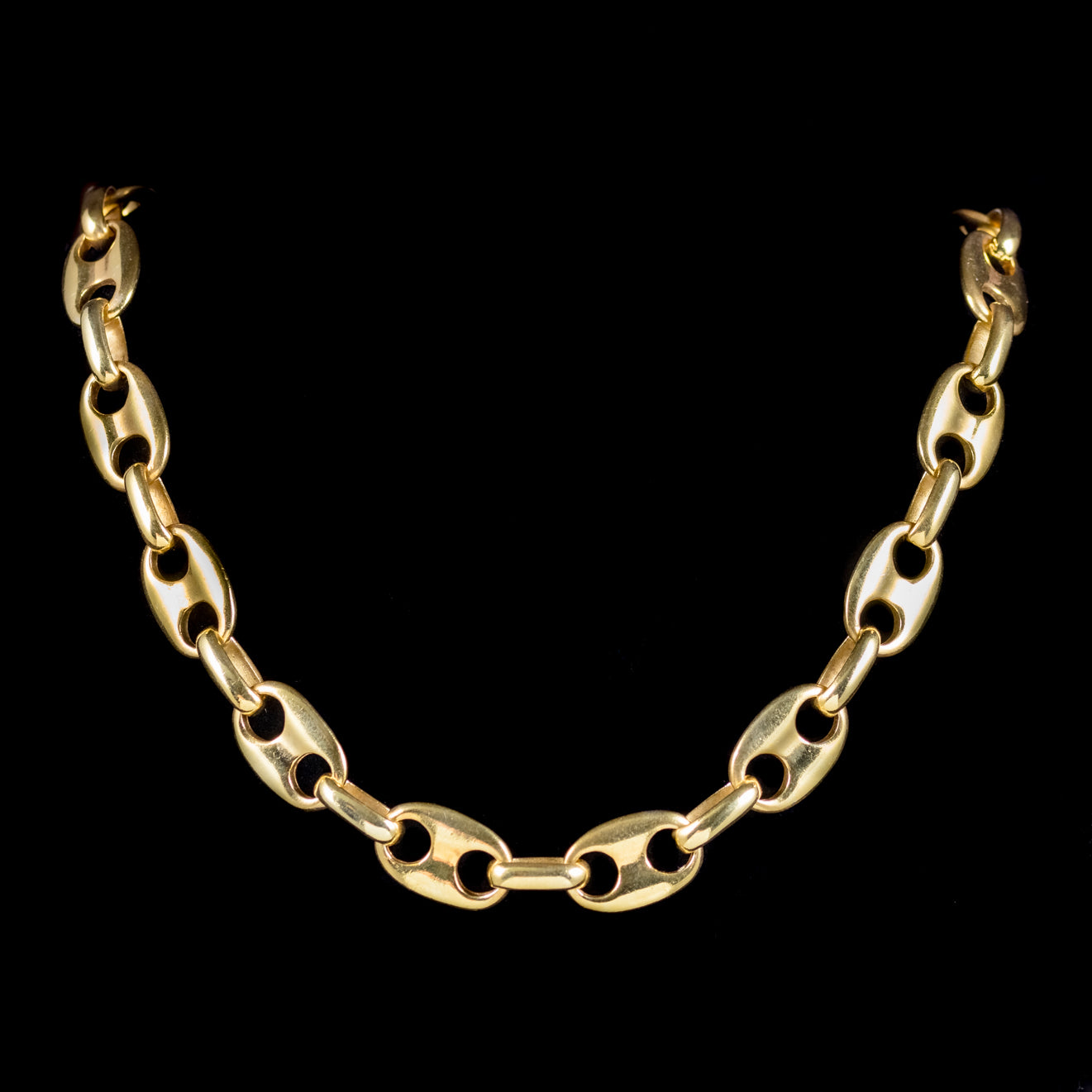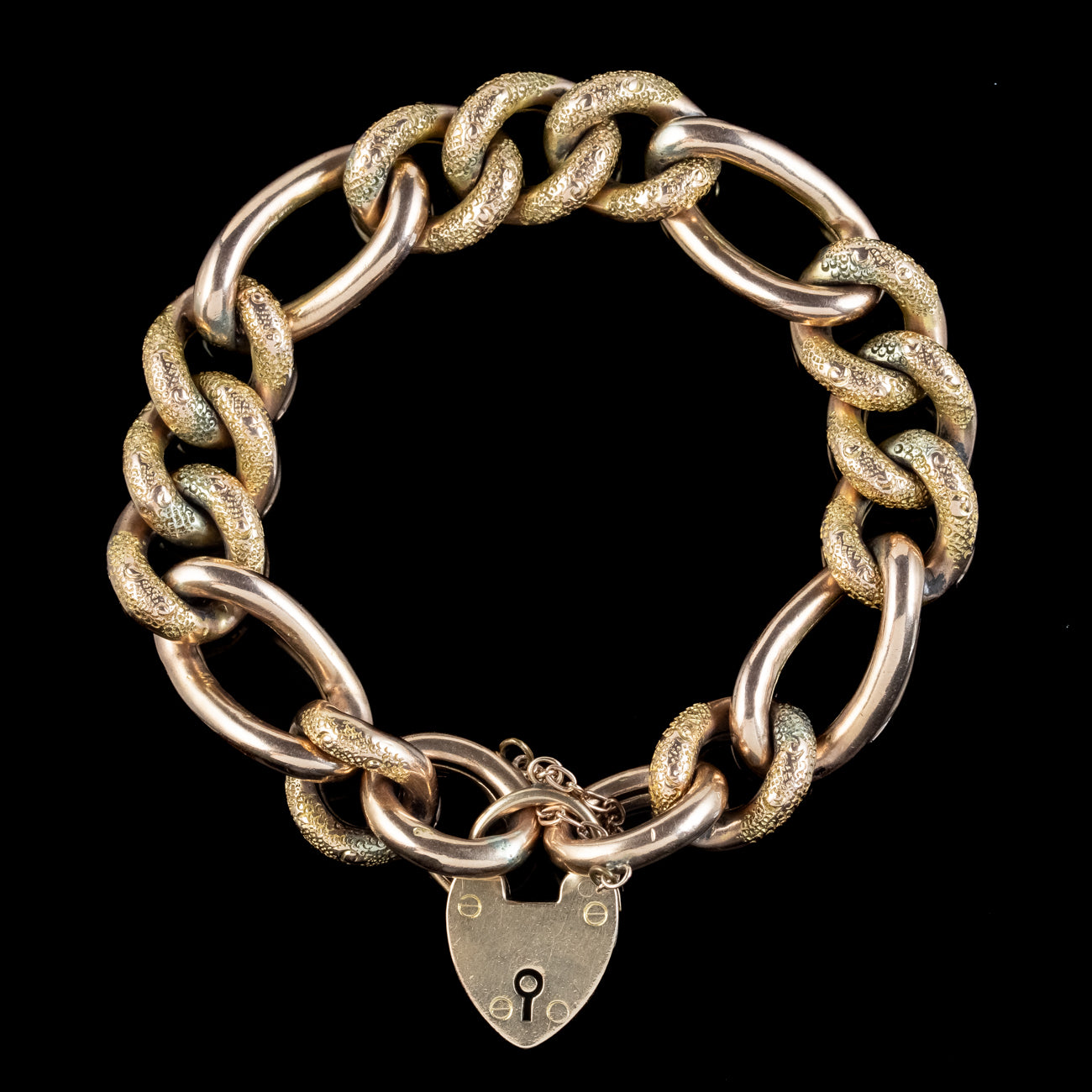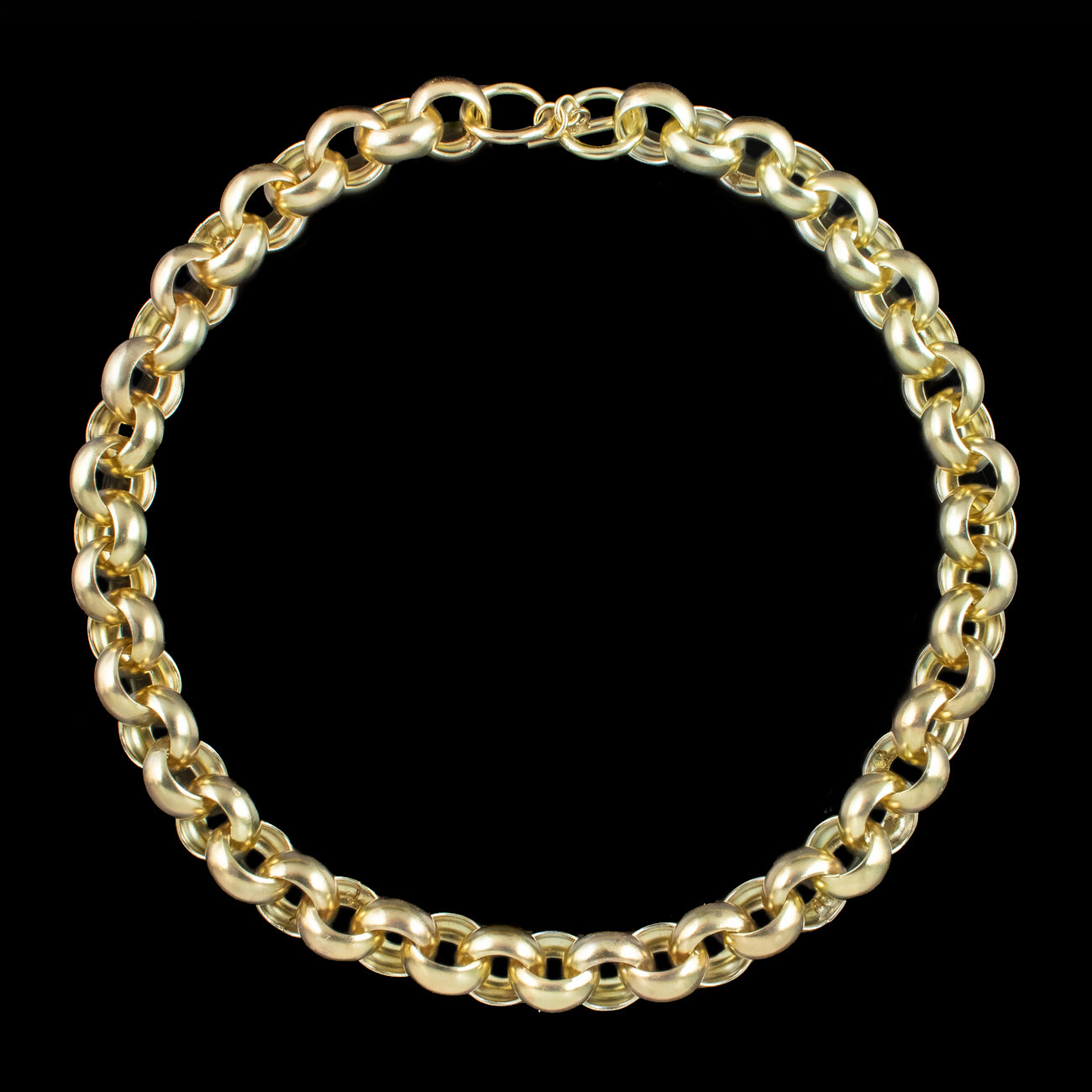Styles of Vintage and Antique Chains
Vintage and antique chains come in a wide variety of styles. Jewellers throughout the ages have experimented with different shaped links and an array of intricate methods of intertwining them. We’ve put together this short guide to the most common types of chain to help you to make an informed decision about what is right for you.
Cable Chains

The most popular style of chain overall, and the easiest to identify, cable chains are made up of identical, straight oval links. Pendants are often hung from fine cable chains, whilst medallion chains have fewer, thicker links.
Curb Chains

These chains are comprised of identical links which have been fashioned to lie flat when connected. As these links do not roll like a cable chain it makes them ideally suited to bracelets and chain-only necklaces which are intended to remain in place.
Snake Chains

Snake chains are made with an array of extremely small rings bound together in an intricate pattern with no space between them. Together these links form a smooth, patterned surface resembling the skin of a snake. These chains are extremely flexible and durable, making them ideally suited to regular wear.
Bead Chains

These chains are also known as “ball chains” and are crafted from small spherical links. They are perhaps most widely recognised as the chain type used in military dog tags, but ornamental gold, silver and platinum variants are also made. They layer well, as their smooth surfaces mean they do not tangle or catch easily.
Anchor Chains

These chains are the same type of chain used to connect ships to their anchors, hence the name. It is extremely important for a ship to remain tethered to its anchor, so they are built to be extremely sturdy as each link is reinforced with a bar across the middle. Anchor chains are mostly worn without pendants or charms as their supporting bars can make it more difficult to attach them.
Box Chains

Most chains have rounded links, but box chain links are square. This means that they are extremely durable and resistant to damage. Their range of movement is limited by their links, which makes them ideally suited to bracelets.
Figaro Chains

These chains originate from Italy and take their name from the name of the main character in two popular operas. They are similar to curb or cable link chains, but use a mix of short and long links to add an extra layer of detail. The number of distribution of the links varies from piece to piece.
Belcher Chains

Made from thick, uniform links these chains are strong and durable. They were originally used to secure items of clothing such as scarves. Their links are sometimes faceted to create a sparkling effect. There is some debate as to how they got their name, but one popular theory is that they were named after the bare knuckle boxer James “Jem” Belcher, who was the champion of all England from 1800 to 1805 and had a penchant for this type of chain.
Rope/Twist Chains

An intricate style of chain with many twisted metal links that are woven together in a rope pattern. The links are individually quite small and relatively fragile, but weaving them together in this manner dramatically increases their strength. Rope chains are often worn without other adornment as their intricacy and the fact that they catch light from all directions makes them impressive enough on their own.
Guard/Muff Chain

These chains were used to carry objects such as keys, or to secure a muff, which was a cylinder of cloth used by ladies to keep their hands warm. They were popular in the Victorian era. They were variously known as guard, longuard or muff chains.
Albert Chain

Like the guard chain, the Albert chain was a practical item in Victorian times, and was chiefly intended to carry a pocketwatch. Albert chains are fitted with a dangling bar which was made to fit inside a button hole so that the chain could be secured to the clothing.
Georgian Chains

These chains, mostly from the later Georgian period, are distinctive in that they are crafted from thin, barrel-shaped links that appear to be much larger and heavier than they actually are. This stems from the fact that gold was relatively scarce during this period due to the Napoleonic wars. It means that they both appear substantial, and can be worn with greater comfort than chunkier chains.
Looking for a particular chain? Why not get in touch and see what our team can do for you? Give us a call on England: 0333 700 4500; or send us an email at enquiries@antiquejewelleryonline.com.

